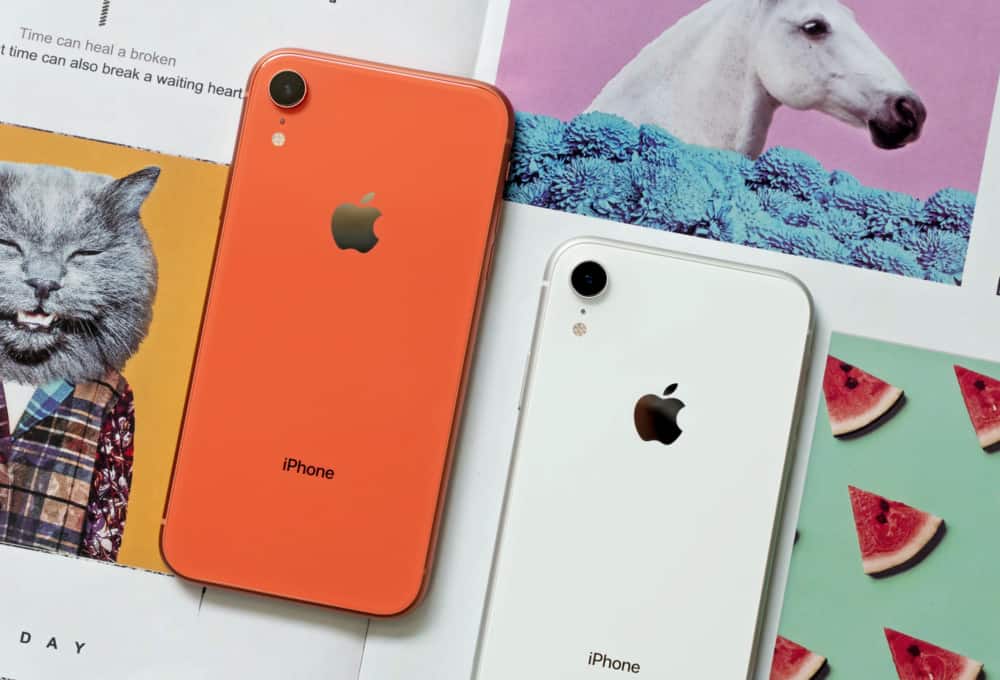Apple’s iPhone XR is a massively popular choice. Even in 2020. But is Apple’s colorful iPhone waterproof? Here’s what you need to know…
Not so long ago, the idea of a waterproof iPhone was nothing more than a flight of fancy, something iPhone users lusted over but did not have. Up until very recently, waterproof phones were more or less exclusive to Google’s Android platform.
But since 2007, all of Apple’s iPhone models have included waterproofing of some kind.
Apple’s iPhone XR, however, is waterproof. It has an IP67 rating which means it will be fine if you accidentally drop it in the toilet, pool, bath, or the sea. IP67 is OK, but it’s not IP68, the gold-standard for waterproofing.
This means, if you own the iPhone XR, you really do not want to be pushing your luck when it comes to water exposure. For instance, the iPhone XR is waterproof, to a degree, and it will survive in water for a short period of time, but you really don’t want to push it…
What Does IP67 Mean?
The term IP67 is thrown around quite a lot these days. It’s one of those things you read, and you sort of know what it means, but when pressed you actually have no idea what the term is referring to.
Well, here’s a handy little explanation of what IP67 means:
Water and dust proof connectivity products are defined by their Ingress Protection (IP) numbers. The first number after IP is for the part’s protection against solid objects like dust and sand. This number can range from 0, meaning no protection against dust and sand, and 6, meaning 100% protection against dust and sand.
The second number after IP is for the part’s protection against liquids. It ranges from 0 to 8.
IP67 equipment is the most commonly found in the connectivity market. It is 100% protected against solid objects like dust and sand, and it has been tested to work for at least 30 minutes while under 15cm to 1m of water.
Keep in mind that newer iPhones offer an advanced water resistance called IP68 – like the iPhone 11 Pro Max which has the highest IP you can get on iPhone.
Meanwhile, the iPhone X is water resistant but it is not in the same league as Apple’s latest phones.
Here’s the full list of iPhones that have water resistance.
iPhone XR IP67 Rating: What Does It Mean?
As you can see, IP ratings refer to two types of protection: 1) from dust and other materials, and 2) the level of water exposure it can handle. The iPhone XR is rated at IP67 which means it can handle a little bit of water: up to 30 minutes in depths of up to one meter of water.
This means you DO NOT want to go swimming in a pool with your iPhone XR or take it out into the sea. The iPhone XR’s IP67 rating is there to protect it from “accidents” like accidentally dropping it in your pint or down the toilet.
It doesn’t mean the iPhone XR is 100% waterproof. It just means water, so long as it is not too deep and the phone isn’t exposed for too long, won’t kill your iPhone. Leave it in there for prolonged periods of time, however, and you run the risk of breaking your phone.
I Learnt This Lesson The Hard Way With An iPhone XS Max
Not so long ago, during the summer, I was working out outside (thanks COVID), and it was baking hot. I had my iPhone XS Max on the table and, mid-way through my workout, the audio in my headphones cut out.
Perplexed, I went over to check my phone. It had shut down, gone into some emergency mode because it had overheated. I knew the iPhone XS Max was waterproof, so I decided to give the phone a little help in cooling down by running it under some cold water.
This was a BIG mistake.
But it shouldn’t have been. You see, the iPhone XS Max has an IP rating of 68 (IP68) which means it can survive under one meter of water for up to 30 minutes. I ran it under the cold water for maybe 30 seconds.
When I rebooted the phone, it still worked fine. It booted up OK, everything seemed fine. But when I came to login with FACE ID, it wouldn’t recognize my face.
What had happened?
Somehow, a drop of water – either condensation or an errant droplet from its cooling session – had gotten inside FACE ID, rendering the sensor all but useless. I tried to dry it out with rice and kitty litter, but it never worked properly again.
This is why I am serious when I tell you to be CAREFUL when exposing your iPhone to water. Even if your iPhone has an IP68 or IP67 rating. Just because they can survive water does not mean they will thrive after a dunk. I learned this lesson the hard way, don’t be like me!


